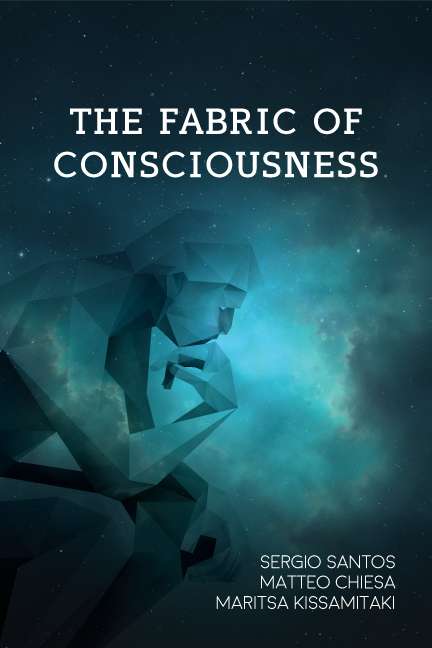The Fabric of Consciousness is a an invitation to thinking around the meaning of the terms consciousness, reality, logics, truth and human. The book centers on the mind, not in the sense that we want to scientifically describe the brain, its parts and its functions. We describe the mind as the element that allows us to attend to what the world, ourselves and others have to say. The mind might further enable us to position ourselves in the world and stand or confront it with a view. We use the mind to read signs and orient our thinking toward that which calls us for attention and holds us. In this way the world orients us as we orient it back as if in a back and forth sway. Is the mind a tool for logics, coherence and the grasping of emotions?
This book comes at a time when predictive AI and definitions of intelligence are expected to overwhelm humans with logics and evidence that anchor to a reality constructed with strong and reasonable arguments. The object of reality in humans is thus understood as a debate toward a target: a search in the name of the curious word “truth” that is otherwise exploited through the other curious words termed “logics”, “reality” and “evidence” to act as a weapon to defeat, overrule and protect our stance with conviction. As metaphysics, religion and ethics totter and collapse in front of our eyes, we find ourselves with a task at hand and the will to materialize it. In this way, we experience the words “truth” and “logics” dissolving as smoke in every turn, but also also embrace them as familiar confronting weapons that act for or against us.
Our work is meant to make us think, so it is an invitation to thinking. With this we clarify that standard logics, such as propositional, mathematical or other logic, are not taken here as the instrument of thought or thinking itself. Our work is then to bring phenomena to the front, so we can acknowledge it as phenomena of the mind. The analysis is also preliminary in that we are challenging current views but do not pretend to have the final say on the topic. Finally, the intention is to write two more follow ups. One on the foundations of truth, reality and logics and another on the concept of the human-object. We expect these three books to act as a foundation to a theory of mind expressed in the language of mathematics and exploiting current scientific findings from neurology to psychology to implement it. With this we clarify and acknowledge that our analysis here is not complete.
The Fabric of Consciusness is largely based on ideas in three works by Martin Heidegger:
- Heidegger, M., What Is Called Thinking? 1976: Harper Perennial.
- Heidegger, M., Introduction to Metaphysics. 2014: Yale University Press.
- Heidegger, M., Being and Time. 2010: SUNY Press





Please sign in or register for FREE
If you are a registered user on Research Communities by Springer Nature, please sign in
This book was the first assignment in a PhD class before it was published, it gave me the chance of reflect on the meaning of thinking. We are often presented with rules and code of conducts that we need to follow to interact with the world. Even as a student we need to follow a predefined path simply because we do not dare to think and take the responsibility for our learning. I found the book somehow difficult but it inspired me.